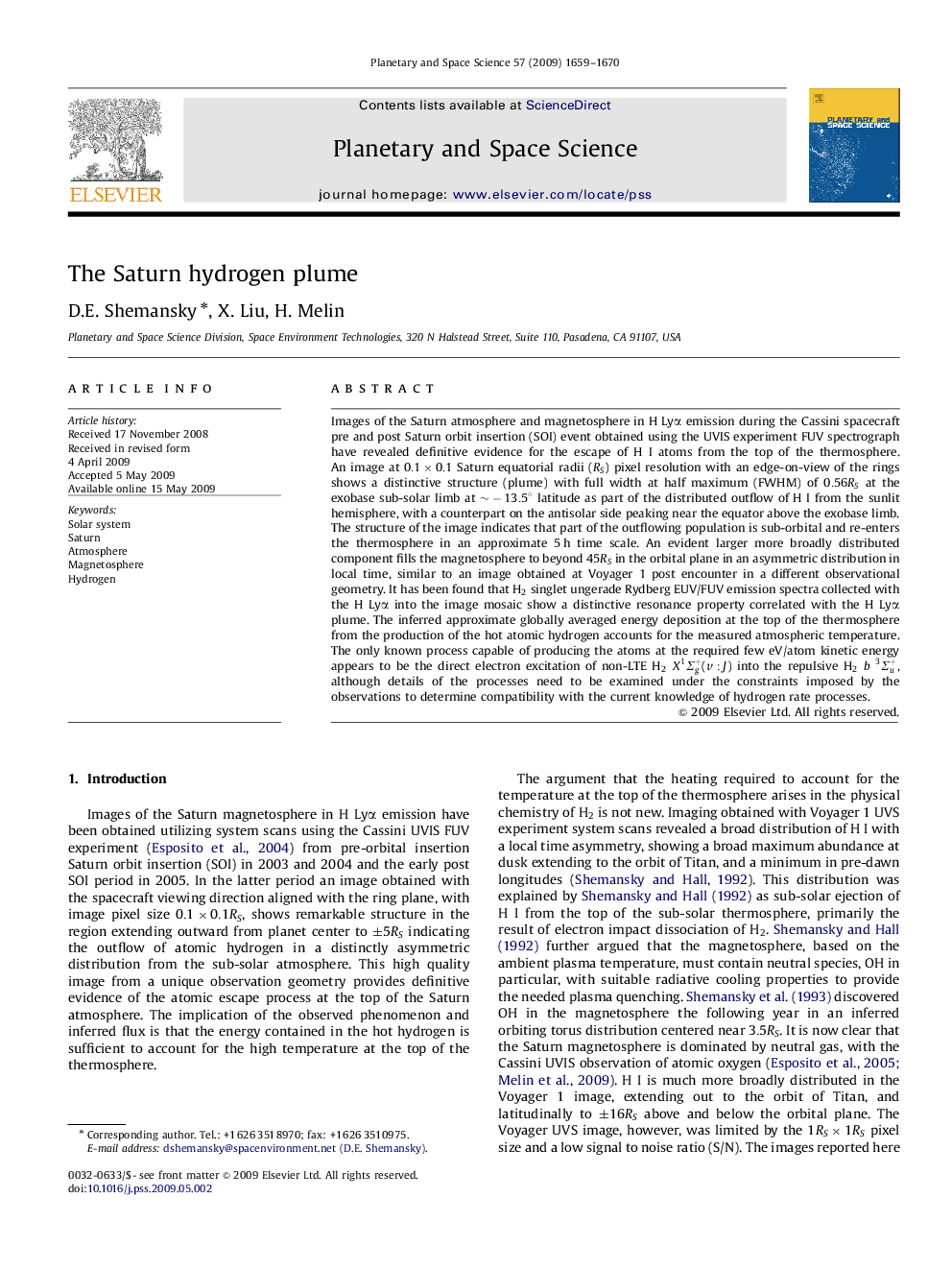| Article ID | Journal | Published Year | Pages | File Type |
|---|---|---|---|---|
| 1781922 | Planetary and Space Science | 2009 | 12 Pages |
Images of the Saturn atmosphere and magnetosphere in H LyαLyα emission during the Cassini spacecraft pre and post Saturn orbit insertion (SOI) event obtained using the UVIS experiment FUV spectrograph have revealed definitive evidence for the escape of H I atoms from the top of the thermosphere. An image at 0.1×0.10.1×0.1 Saturn equatorial radii (RSRS) pixel resolution with an edge-on-view of the rings shows a distinctive structure (plume) with full width at half maximum (FWHM) of 0.56RS0.56RS at the exobase sub-solar limb at ∼-13.5∘∼-13.5∘ latitude as part of the distributed outflow of H I from the sunlit hemisphere, with a counterpart on the antisolar side peaking near the equator above the exobase limb. The structure of the image indicates that part of the outflowing population is sub-orbital and re-enters the thermosphere in an approximate 5 h time scale. An evident larger more broadly distributed component fills the magnetosphere to beyond 45RS45RS in the orbital plane in an asymmetric distribution in local time, similar to an image obtained at Voyager 1 post encounter in a different observational geometry. It has been found that H2H2 singlet ungerade Rydberg EUV/FUV emission spectra collected with the H LyαLyα into the image mosaic show a distinctive resonance property correlated with the H LyαLyα plume. The inferred approximate globally averaged energy deposition at the top of the thermosphere from the production of the hot atomic hydrogen accounts for the measured atmospheric temperature. The only known process capable of producing the atoms at the required few eV/atom kinetic energy appears to be the direct electron excitation of non-LTE H2H2XΣg+1(v:Jv:J) into the repulsive H2H2bbΣu+3, although details of the processes need to be examined under the constraints imposed by the observations to determine compatibility with the current knowledge of hydrogen rate processes.
